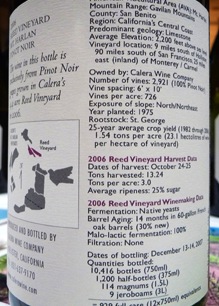Commentary: Love It or List It
13 Mar 2013
By now, everyone’s had a chance to read and consider the seemingly endless list of top cigars of 2012. I know I have. And they’ve led me to a few new smokes I’m eager to try.
I have to say, though, I’m not really a fan of annual cigar rankings. Sure, tell me what cigars you really like and why, tell me the ones that blew you away. Heck, I’m also interested in the cigars that disappointed you. But I see no reason to try to turn smoking into a contest.
I understand it from a manufacturer’s point of view, particularly when it comes to the annual list by the industry giant, Cigar Aficionado. Whether you like it or loathe it, you cannot deny the magazine’s impact on cigar sales.
Inclusion can boost sales like nothing else. On the other hand, making the grade is no guarantee of success. Anyone smoke a Warlock lately? (No. 9 last year.)
I know there’s a general obsession with lists and ranking, but trying to reduce something as subjective as individual taste to a scoresheet seems to me a doomed practice. It’s also highly unlikely anyone could have smoked all the vitolas of all the cigars that could be ranked.
For instance, as I type this, I have Cigar Journal’s “Finest 25 Cigars of 2012†on my desk. At the bottom of the list is the Ashton VSG Robusto. I can’t help but wonder, did the same person sample each of the other 12 sizes in that blend to determine the Robusto is the best? Or who’s the lucky smoker who tried all 10 of the Padrón 1964 Anniversary Series to award honors to the Exclusivo Natural?
Frankly, I wish the compilers would provide more information. I’m still sorry Cigar Aficionado dropped the annual production figures from the standard data a few years back, though it’s included in some descriptions.
All that said, I do find the listings useful. One of my current favorites, the Aging Room Small Batch M356, came to my attention solely from last year’s CA listing. And this year I have at least three want-to-try smokes heading my list:
Kristoff Corojo Limitada Torpedo, CA’s No. 11. I not sure I’ve ever smoked a Kristoff, being baffled by the many variations on display in the humidor. But I’ll keep my eye out for this small-production stick.
CyB, the Joya de Nicaragua release that was No. 8 on Jerry Cruz’s list at Stogie Review.
Rodrigo La Fortaleza, the top pick at retailer PipesandCigars.com, which raved about it. Luckily, a Tampa shop I visit once in a great while carries this line.
Anything from all the lists make your must-try list?
photo credit: N/A

 Do you age your sticks? Cello on or cello off? What’s the best bundle? Is your humidity at 60 or 65 or 70? I know it’s Nicaraguan tobacco, but what region of Nicaragua is it from? Do you think stalk-curing is the next big thing? Have you seen this stick I got at event last week?
Do you age your sticks? Cello on or cello off? What’s the best bundle? Is your humidity at 60 or 65 or 70? I know it’s Nicaraguan tobacco, but what region of Nicaragua is it from? Do you think stalk-curing is the next big thing? Have you seen this stick I got at event last week? If you take a look at this wine label (which I’ll readily admit is hardly typical) you’ll see tons of information, virtually all of which could be just as easily at home on a cigar box: type of grapes (or tobacco), location of vineyards (or farms), yield per acre, year originally planted, date of harvest, aging information, blend information, date bottled (or boxed), and quantity made.
If you take a look at this wine label (which I’ll readily admit is hardly typical) you’ll see tons of information, virtually all of which could be just as easily at home on a cigar box: type of grapes (or tobacco), location of vineyards (or farms), yield per acre, year originally planted, date of harvest, aging information, blend information, date bottled (or boxed), and quantity made.
 Patrick Ashby
Co-Founder & Editor in Chief
Patrick Ashby
Co-Founder & Editor in Chief Patrick Semmens
Co-Founder & Publisher
Patrick Semmens
Co-Founder & Publisher George Edmonson
Tampa Bureau Chief
George Edmonson
Tampa Bureau Chief